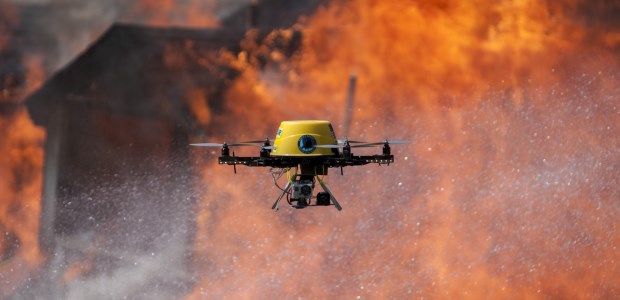
New NFPA Standard Issued for Public Safety Drone Operations
The NFPA 2400 standard underscores the need for an sUAS coordinator and the importance of knowing airspace requirements, weather conditions, crew readiness benchmarks, resource needs, incident command systems, regulatory requirements, and communication strategies.
The National Fire Protection Association recently issued its first unmanned robotics guidance for first responders and others. NFPA 2400®, Standard for Small Unmanned Aircraft Systems (sUAS) Used for Public Safety Operations, was developed by representatives from public safety departments with unmanned aircraft systems -- drones -- including the fire service, law enforcement, and emergency medical services.
NFPA's release describes the standard standard as "an all-encompassing standard that applies to all public safety departments that operate sUAS, providing much-needed guidance as drone usage rises. It also gives departments the information and knowledge needed to develop a comprehensive sUAS program based on an entity's operation type while identifying potential risks associated with deployment."
It says the standard underscores the need for an sUAS coordinator and the importance of knowing airspace requirements, weather conditions, crew readiness benchmarks, resource needs, incident command systems, regulatory requirements, and communication strategies.
The standard breaks down aerial integration into three main elements:
1.sUAS organizational deployment and considerations, which addresses mission objectives, program development, purchase specification, risk assessment, and multiple aircraft operations.
2.Professional qualifications, providing minimum job performance requirements of a remote pilot in command (RPIC) and visual observer. Essential job tasks are listed so a curriculum can be developed and RPICs/visual observers can be trained in accordance with public safety and emergency responder requirements.
3. Maintenance program responsibilities, emphasizing recordkeeping, discrepancy reporting, routine cleaning, upkeep due to operational applications and the operating environment, and storage requirements so program coordinators can run an effective program.
"NFPA 2400 provides an ANSI-accredited road map for public safety entities to create a drone program that is based on the most current industry knowledge," said Michael Wixted, the staff liaison to NFPA 2400. "The standard is designed to help public safety officials define criteria, understand program elements, train staff accordingly, and plan for various scenarios long before a drone program launches or any technology takes flight."
The release says the request for a small unmanned aircraft system standard for public safety operations began in August 2016. The standard's developers included 46 professionals from fire service organizations such as IAFC, IAFF, the California State Firefighters' Association, FDNY, and county fire and rescue departments, along with representatives from sheriffs' departments, IAB, DHS, ALEA, police foundations, metropolitan units, the Department of Transportation, private ambulance companies, NIST, manufacturing, aviation, and consultancies.